Archived Mold Remediation Blog Posts
Spring Ahead to Prevent Mold
3/4/2019 (Permalink)
As the last of the winter storms finally melt on the East End of Long Island, property owners everywhere are dealing with more leaks, pipes breaking, flooded basements and related problems in their homes and businesses. If water is left to sit for too long, mold can develop. Fortunately, with a few precautionary steps, you can prevent the spread of mold.
The following practical tips from SERVPRO of the East End will help you control moisture, properly ventilate your home or business, thoroughly clean, and ultimately, prevent mold from growing inside of your home or business.
Reposition Your Downspouts
Make sure your downspouts are positioned away from your property. This will ensure the water drains away from the property preventing debris, soil, and stone buildup. Re-positioning downspouts will also help ensure the interior of your property remains nice and dry and, thereby, free of fungal growth.
Use a Dehumidifier
Many properties have a closed-loop ventilation system, which essentially recirculates the same air indoors. To purify the air and prevent indoor air contaminants from collecting, consider using a dehumidifier. Your basement, for example, is a great place to install a dehumidifier, because basements are generally damp. The dehumidifier will help keep the relative humidity between 30 and 50 percent hereby preventing black mold growth.
Check Your Attic
Inspect your crawl space, your attic or any room you tend to overlook or think very little about. Because you do not spend a great deal of time in these rooms, you may neither consider nor suspect mold growth. The longer the mold grows, the greater the damage it can cause. Not only will the cost to remediate the problem increase, but your health may also worsen because of ongoing mold exposure. Thus, you want to detect mold in its earliest stages. Inspecting the rooms you do not usually use will help you to do just that.
Repair All Leaks
If the wintry weather has damaged your property's foundation or roofing, leaving cracks of any size, water could easily enter (and weaken) the structure. When you have moisture, the right temperature, and a food source (think drywall), mold can grow within 24 to 48 hours. Act fast and fix leaking pipes, deteriorating window sills and frames, and even a cracked chimney or foundation. Don't let these small repairs wait, or you will likely have bigger problems ahead. Inspect areas of your property where there's more plumbing and thereby more potential for leaks: in the basement and underneath the bathroom and kitchen sinks. Unfortunately, you can't always see a leaking pipe. In many cases, it's either behind a wall or underneath a floorboard. But, you might see water damage on a floorboard, ceiling tile or wall resulting from it. For assurance and peace of mind, consider calling SERVPRO of the The East End for a professional assessment.
Frequently Clean
Spring is the perfect time to clean your carpets, drapery, upholstery, furniture, kitchen, bathroom tiles and grout; and all of the dark, damp corners of your property. Cleaning each of these will help you keep tabs on problem areas. You are more likely to locate water damage and prevent mold if you are cleaning on a regular basis.
Always control moisture, keep sufficient airflow and clean your property often. If you see signs of mold following your spring cleaning, call SERVPRO of the The East End to professionally clean, dry and disinfect the area. Mold in your home or business from winter conditions is an unfortunate situation, but SERVPRO of the East End will be happy to professionally mitigate any damage and make it look and feel "Like it never even happened."
A Few Tips for Preventing Mold
2/11/2019 (Permalink)
Mold is a common problem for property owners on the East End of Long Island, where our coastal communities are exposed to a great deal of moisture in the air providing the ideal environment for mold to proliferate. Mold can be colored green, purple, white or orange. While mold plays an important role in the outdoor environment, breaking down dead plants, mold is an unwelcome and unhealthy entity in our homes and businesses.
Showers, bathrooms and kitchens are a common location for mold to grow, but it is possible for mold to grow anywhere on your property. Mold may come inside a property from an outside growth through inadequately sealed windows or doors. Mold spores cannot be entirely eliminated, but they will not grow if the environment is dry and well ventilated. Mold growth may be prevented by ensuring a quick and thorough cleanup if and where a water damage occurs. Using air conditioners during humid seasons and exhaust fans in kitchens may also help to prevent mold from growing.
Other areas to monitor moisture in order to prevent mold growth include: exterior walls and surfaces in need of insulation where condensation can build, air conditioner drip pans, check for leaks around refrigerator, ensure crawl spaces are well ventilated, and check for leaks around a tub.
These are a few simple tips for making sure mold is not growing in your home or business. If you do discover mold on your property, call SERVPRO of The East End at 631-653-9595. We have been in the business of cleaning and restoring residential and commercial properties on The East End of Long Island for over 40 years. Our IICRC trained and certified technicians have the experience, knowledge and state-of-the art equipment to make it "Like it never even happened."
Important Facts About Mold
2/7/2019 (Permalink)
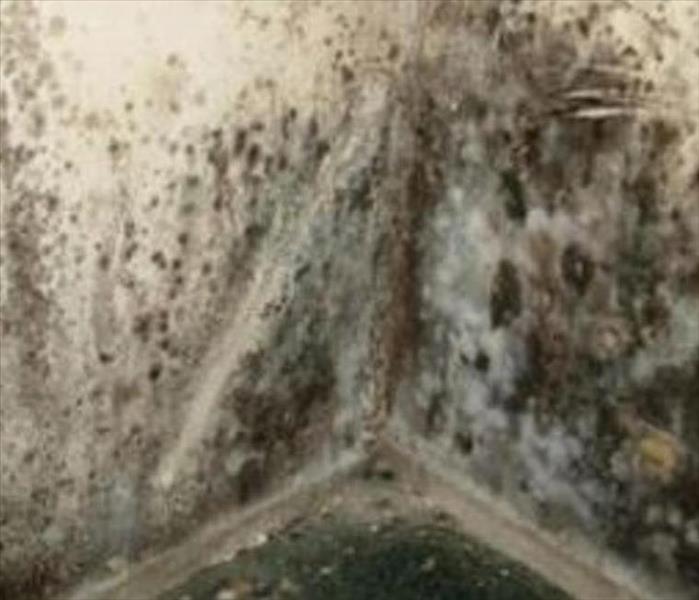 Understanding a few basic facts about mold can help you identify, assess and remedy a mold problem in your own home.
Understanding a few basic facts about mold can help you identify, assess and remedy a mold problem in your own home.
What are molds?
Molds are fungi that can be found both indoors and outdoors. No one knows how many species of fungi exist but estimates range from tens of thousands to perhaps three hundred thousand or more. Molds grow best in warm, damp, and humid conditions, and spread and reproduce by making spores. Mold spores can survive harsh environmental conditions, such as dry conditions, that do not support normal mold growth.
Common indoor molds?
- Cladosporium
- Penicillium
- Alternaria
- Aspergillus
How do molds affect people?
Some people are sensitive to molds. For these people, exposure to molds can lead to symptoms such as stuffy nose, wheezing, and red or itchy eyes, or skin. Some people, such as those with allergies to molds or with asthma, may have more intense reactions. Severe reactions may occur among workers exposed to large amounts of molds in occupational settings, such as farmers working around moldy hay. Severe reactions may include fever and shortness of breath.
People with a weakened immune system, such as people receiving treatment for cancer, people who have had an organ or stem cell transplant, and people taking medicines that suppress the immune system, are more likely to get mold infections.
Exposure to mold or dampness may also lead to development of asthma in some individuals. Interventions that improve housing conditions can reduce morbidity from asthma and respiratory allergies.
Where are molds found?
Molds are found in virtually every environment and can be detected, both indoors and outdoors, year round. Mold growth is encouraged by warm and humid conditions. Outdoors they can be found in shady, damp areas or places where leaves or other vegetation is decomposing. Indoors they can be found where humidity levels are high, such as basements or showers.
How can people decrease mold exposure?
Sensitive individuals should avoid areas that are likely to have mold, such as compost piles, cut grass, and wooded areas. Inside homes, mold growth can be slowed by controlling humidity levels and ventilating showers and cooking areas. If there is mold growth in your home, you should clean up the mold and fix the water problem. Mold growth can be removed from hard surfaces with commercial products, soap and water, or a bleach solution of no more than 1 cup of household laundry bleach in 1 gallon of water. Follow the manufacturers’ instructions for use (see product label).
Other Recommendations include:
- Keep humidity levels as low as you can—no higher than 50%–all day long. An air conditioner or dehumidifier will help you keep the level low. Bear in mind that humidity levels change over the course of a day with changes in the moisture in the air and the air temperature, so you will need to check the humidity levels more than once a day.
- Use an air conditioner or a dehumidifier during humid months.
- Be sure the home has adequate ventilation, including exhaust fans.
- Add mold inhibitors to paints before application.
- Clean bathrooms with mold killing products.
- Do not carpet bathrooms and basements.
- Remove or replace previously soaked carpets and upholstery.
About SERVPRO of The East End
If you do see, smell or detect mold, call SERPVPRO of The East End. We have been in the business of cleaning and restoring residential and commercial properties for over 40 years. Our team of IICRC trained and certified staff knows how to effectively deal with mold infestations and we have been doing that on The East End for over 40 years. We also have the state of the art equipment and techniques to carry out remediation tasks of any size to keep your home safe and clean. We are on call 24/7 365 days a year to be “Faster to any size disaster” making it "Like it never even happened." Give us a call at 631-653-9595 to discuss your cleaning and restoration issues.
*information from https://www.cdc.gov (Center For Disease Control and Prevention)
Common Misconceptions About Mold
12/17/2018 (Permalink)
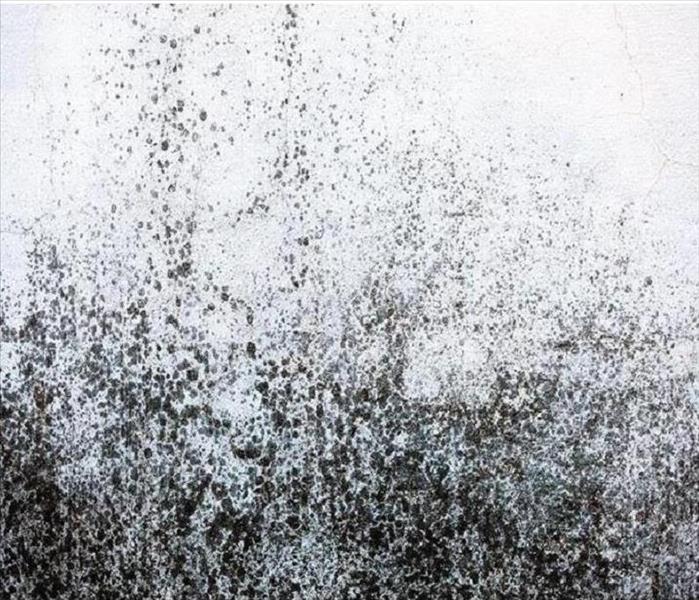 Learn the facts you need to know about mold before attempting to clean it up yourself.
Learn the facts you need to know about mold before attempting to clean it up yourself.
Mold is present everywhere. Mold and mildew are very common indoors and out, and spores in the air can quickly latch on and begin to grow on any surface where there is moisture. Most people hold many misconceptions about mold and the best tactics on how to keep their home healthy and clean and free from mold. Following are a few of the most common misconceptions about mold:
1) Mold is safe to clean myself
No matter what type of mold you think you have, it is always important to take precautionary measures in order to prevent exposure. Because mold releases spores, the cleaning process can increase the amount of spores in the air exponentially. It is best to hire restoration professionals that are trained in mold removal and damage repair. SERVPRO of The East End has helped clients with water damage restoration and mold remediation, ensuring that all of the hazardous materials are properly disposed of.
2) Black mold is “toxic” mold
Technically, no mold is “toxic.” Some molds are toxigenic, which means that they can create toxins, but the mold itself is not poisonous. Many molds and any large colony of mold can produce enough spores to create unhealthy conditions, especially for asthma and allergy sufferers. Stachybotrys is the black strain of mold that is most commonly associated with adverse reactions.
3) This mold isn’t black mold, so it isn’t harmful
The color of mold does not always indicate its toxicity. Mold can colonize in various colors such as brown, green, white and yellow as well as black. Any significant colony of mold can create increased levels of spores present in the air. Stachybotrys mold can be hazardous, but there are also other species of mold such as Alternaria, Aspergillus, Fusarium and Penicillium, that can be unhealthy as well if the colonization is extensive.
4) I’ve cleaned with bleach, so the problem is fixed
If the mold has begun to colonize in a porous material such as paper, drywall or wood, then surface cleaning with a watered down bleach solution is not always an effective solution. SERVPRO of The East End professionals will take the steps to address more extensive mold problems as they have done on the East End of Long Island for over 40 years.
Call SERVPRO of The East End at 631-653-9595 for all of your cleaning, restoration and remediation needs. We are 'Faster to any size disaster' to make it "Like it never even happened."
Tips to Prevent Mold
12/14/2018 (Permalink)
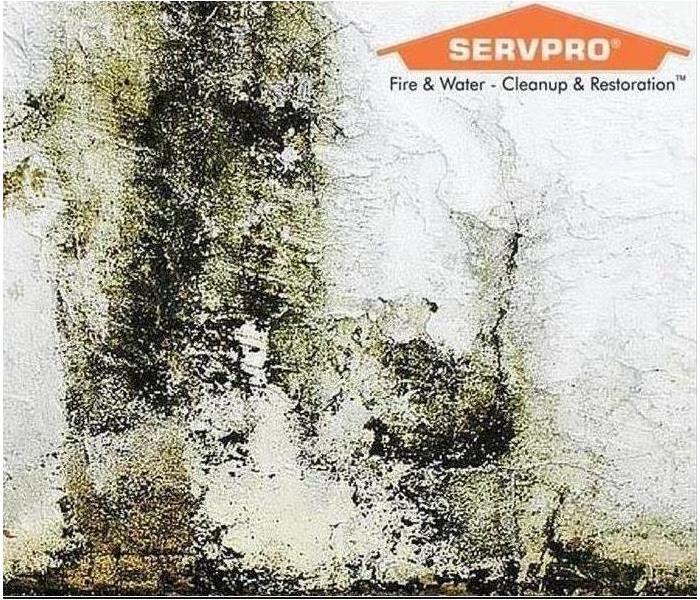 Taking a few precautionary tips will ensure that mold is not growing and spreading in your home,
Taking a few precautionary tips will ensure that mold is not growing and spreading in your home,
Here on the East End of Long Island, where we are surrounded by water and frequently affected by coastal storms, water damage and the mold that follows, is a common problem. Mold develops in warm, damp environments. It can come in many colors, including: green, purple, white and orange. And while mold plays an important role outside in the environment by breaking down dead plants, it is largely an unwelcome, toxic problem in the properties we live and work in.
Showers, bathrooms and basements are the most common places for mold to grow, but it is very possible for mold to grow anywhere there is dampness in a home. Mold can come inside from an outside growth through inadequately sealed windows or doors. Mold spores cannot be eliminated entirely, but they will not grow if the environment is dry and well ventilated. Mold growth may be prevented by ensuring that if water damage occurs, clean up occurs quickly. Using air conditioners during humid seasons and exhaust fans in kitchen can help prevent mold from growing.
Other areas to monitor moisture to prevent mold growth: exterior walls and surfaces in need of insulation where condensation can build, air conditioner drip pans, check for leaks around refrigerator, ensure crawl spaces are well ventilated, and check for leaks around a tub.
These are a few simple tips for making sure mold is not growing in your home. If you do discover mold, call SERVPRO of The East End at 631-653-6565 to provide the mold remediation services you need to make it "Like it never even happened." ensuring that your property and family are safe from any further harm.
The Difference Between Mold & Mildew
9/25/2018 (Permalink)
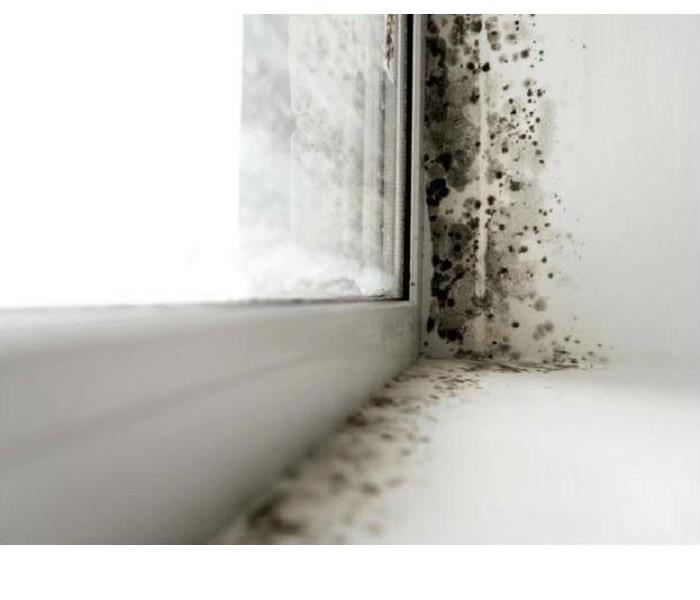 Mold and mildew are both types of fungi that thrive indoors and should be professionally removed.
Mold and mildew are both types of fungi that thrive indoors and should be professionally removed.
Mold and mildew are fungus brothers, but they do have a few differences. Following are some of those differences.
Like two siblings who have similar features, mold and mildew have a few similar characteristics: Both thrive in moist, warm areas where they can grow. Both grow on a multitude of surfaces, from food and clothing to your bath and shower. And they are both fungi that no property owner wants to see on their property.
But mold and mildew also have some differences when it comes to size, color and texture.
Mildew is a surface fungi that can be easily identified as a patch of gray or white fungus lying on the surface of a moist area. Mildew is easily treated with a store bought cleaner and a scrub brush.
Mold, on the other hand, can be black or green and is often the result of a much larger and deeper infestation. This type of fungus may appear "fuzzy" especially when it is found on food. It may also feel slimy in nature.
The key to treating mold and mildew is to remove it from your property. Treating it accordingly will safeguard your property damage. It is widely recommended that you hire professionals to mitigate the problem for you. Trying to do-it-yourself can often result in further damage, without fully mitigating the problem.
At SERVPRO of The East End, our team of IICRC trained and certified professionals know how to effectively deal with mold infestations and we have been doing that on The East End of Long Island for over 40 years. We have state of the art equipment and techniques to carry out remediation tasks of any size and through any season. If you see or sense signs of mold on your property, call SERVPRO of The East End at 631-653-9595. We are 'Faster to any size disaster' and complete each job 'Like it never even happened'.
Three Warning Signs of Mold
2/15/2018 (Permalink)
Nothing scares a homeowner more than mentioning the word "mold." Not only can it cause damage to your home and make it difficult to sell, it also can be a health hazard to you and your family.
Here are three warning signs of this insidious fungus that you don't want to ignore:
1) Water spots
Any wet spot in your East End home can be a potential sign of fungus growth. This may include water spots on your ceilings or walls, or on floors in your basement or crawlspace. If you find evidence of water spots, you need to find the potential source of moisture and have it taken care of immediately.
2) Discoloration
If you find a spot on a wall or floor that's discolored, it is a potential sign of mold. Discoloration that is green or black is a definite warning sign of fungus growth. However, any discoloration can mean growth is present, even if it isn't of the tell-tale colors.
3) Bad smell
If you have fungus growth in your home, it may cause a bad smell. Depending on the type of growth and how much of it you have, it could be a very faint smell, or it could be overwhelming. It can smell musty or earthy, or it may produce a more pungent odor. Any bad smell needs to be investigated and addressed.
Mold can be harmful and is not something to be ignored. If you experience any of these warning signs, call SERVPRO of The East End to remediate. Our trained and certified IICRC staff knows how to effectively deal with mold infestations and we have been doing that on The East End for over 40 years. We also have the state of the art equipment and techniques to carry out remediation tasks of any size to keep your home safe and clean.
Why Clean Air Ducts?
2/9/2018 (Permalink)
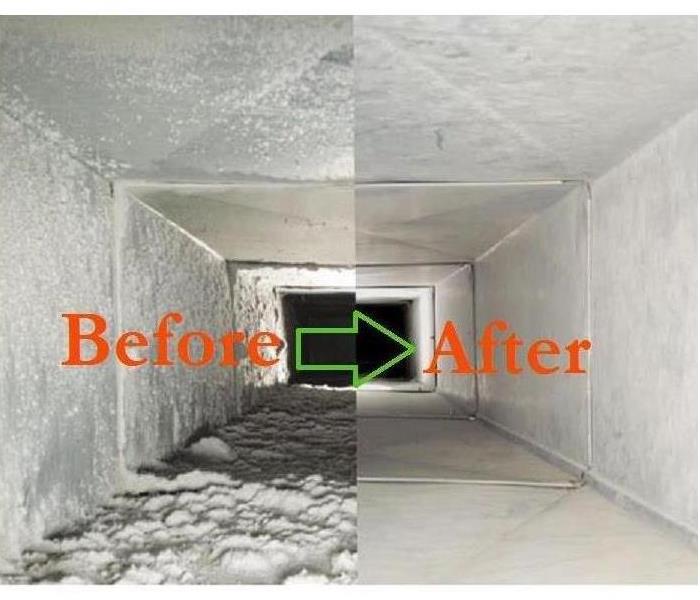 The Difference between Dirty & Clean Air Ducts is Often the Difference Between an Unhealthy & a Healthy Environment.
The Difference between Dirty & Clean Air Ducts is Often the Difference Between an Unhealthy & a Healthy Environment.
Because they get dirty!
In addition to normal accumulations of dust and dirt found in all homes and businesses with air ducts, there are several other factors that can increase the need for regular HVAC system cleaning:
-pets
-occupants with allergies or asthma
-cigarette or cigar smoke
-water contamination or damage to the home or HVAC system
-home renovation or remodeling projects
Some occupants are more sensitive to these contaminants than others. Allergy and asthma sufferers, as well as young children and the elderly tend to be more susceptible to the types of poor indoor air quality that air duct cleaning can help address.
Indoor air quality is a concern that homeowners have when they investigate air duct cleaning. Your heating and cooling systems are the lungs of your home and business. These systems take air in and breathe the air out.
Through normal occupation of a home or business, we generate a great deal of contaminants and air pollutants, such as dander, dust, and chemicals. These contaminants are pulled into the HVAC system and re-circulated 5 to 7 times per day, on average. Over time, this re-circulation causes a build-up of contaminants in all of the duct work.
While dirty ducts don’t necessarily mean unhealthy air in your home, school or workplace, they often contribute to larger health issues or harboring contaminants that could cause serious problems for people with respiratory health conditions, autoimmune disorders or some environmental allergies. Such contaminants may also lead to mold damage.
According to the U.S. Department of Energy, 25 to 40 percent of the energy used for heating or cooling a home or business is wasted. Contaminants in the heating and cooling system cause it to work harder and shorten the life of your system, which may ultimately increase your operating costs. Although filters are used, the heating and cooling systems still get dirty through normal use.
When an HVAC system is clean, it doesn’t have to work as hard to maintain the temperature you desire. As a result, less energy is used, leading to improved cost-effectiveness. As well, cleaner systems lead to healthier air intake for all of a property's inhabitants.
What You Need To Know About Mold
2/8/2018 (Permalink)
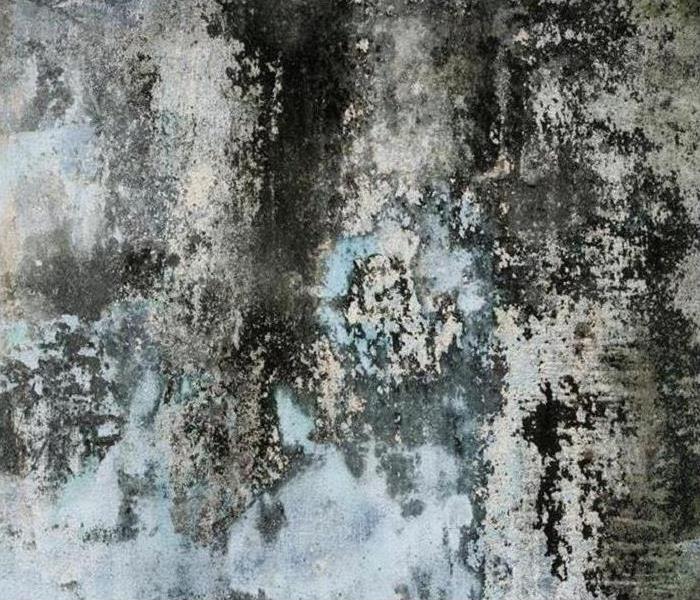 Mold poses a serious health threat to anyone living with it. For proper mold remediation, call SERVPRO of The East End.
Mold poses a serious health threat to anyone living with it. For proper mold remediation, call SERVPRO of The East End.
Water damage in your home or office? You could be at risk for mold growth. This subject is actually more complex and serious than you may think. So let us break it down for you.
In 2015, Governor Andrew Cuomo signed a NYS Senate Bill S3667D-2013 which added Article 32 to the Labor Law. This article established the licensing of mold inspection, assessment, and remediation specialists and minimum work standards.
Now that this law is in effect, mold remediation specialists are required to have more certification than they have ever needed before. For homeowners and business owners, what this means is that any contractor you hire to perform mold remediation and abatement services must be certified.
When should you hire a mold remediation company?
- New York State has set fourth a guideline that whenever 10 sq ft or more of mold is found you should consult a mold remediation specialist.
Need more tips?
- Request proof of pollution insurance
- Request proof of workers compensation and liability insurance
- Request employee and company certification.
- Obtain a written contract for all work to be done and costs to be incurred.
Or you could just call SERVPRO of The East End. All of our employees are IICRC certified mold remediators and we stary current on all certifications and requirements set forth by New York State . Our team continues to advance in mold remediation techniques as the industry advances each year.
Mold is a serious threat to home and office owners, so having professionals who know how to handle the job correctly is crucial to the health and well being of your family and employees. We have been living and working in the community we serve for over 40 years. We care about the welfare of our neighbors and friends, as well as the businesses we patronize. Call us at 631-653-9595 to learn more.
Does Your East End Property Have a Mold Problem?
12/29/2017 (Permalink)
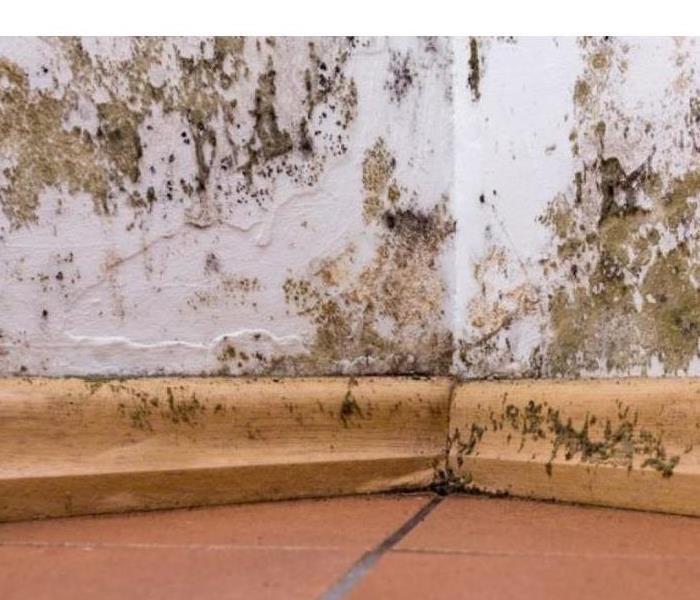 Mold can spread through a home or business in as little as 48 hours.
Mold can spread through a home or business in as little as 48 hours.
Microscopic mold spores naturally occur almost everywhere, both outdoors and indoors. This makes it impossible to remove all mold from a home or business. Therefore, mold remediation reduces the mold spore count back to its natural or baseline level. Some restoration businesses advertise “mold removal” and even guarantee to remove all mold, which is a fallacy. Consider the following mold facts:
- Mold is present almost everywhere, indoors and outdoors.
- Mold spores are microscopic and float along in the air and may enter your home or business through windows, doors, or AC/heating systems or even hitch a ride indoors on your clothing or a pet.
- Mold spores thrive on moisture. Mold spores can quickly grow into colonies when exposed to water. These colonies may produce allergens and irritants.
- Before mold remediation can begin, any sources of water or moisture must be addressed. Otherwise, the mold may return.
- Mold often produces a strong, musty odor and can lead you to possible mold problem areas.
- Even higher-than-normal indoor humidity can support mold growth. Keep indoor humidity below 45 percent.
If your home or business has a mold problem, we can inspect and assess your property and use our specialized training, equipment, and expertise to remediate your mold infestation.
If You See Signs of Mold, Call Us Today – 631-653-9595
Follow These Mold Safety Tips If You Suspect Mold
12/29/2017 (Permalink)
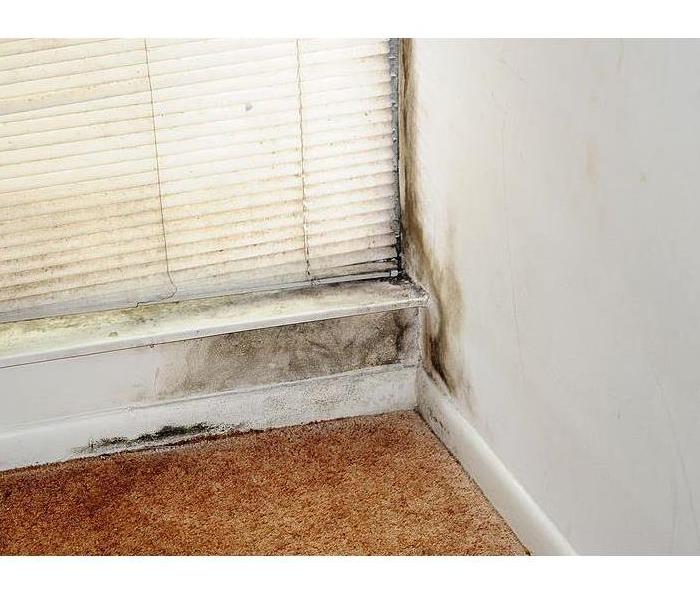 Be careful! Without proper training, you could be spreading mold throughout your home
Be careful! Without proper training, you could be spreading mold throughout your home
If you see visible mold, do not disturb it. You can inadvertently spread the mold infestation throughout your home. When mold is disturbed, the mold can release microscopic mold spores which become airborne and can circulate inside your home.
What to Do:
- Stay out of affected areas.
- Turn off the HVAC system and fans.
- Contact SERVPRO of The East End for mold remediation services.
What Not to Do:
- Don’t touch or disturb the mold.
- Don’t blow air across any surfaces with visible or suspected mold growth.
- Don’t attempt to dry the area yourself.
- Don’t spray bleach or other disinfectants on the mold.
About Our Mold Remediation Services
SERVPRO of The East End specializes in mold cleanup and restoration. In fact, it’s a cornerstone of our business. Our crews are highly trained restoration professionals that use specialized equipment and techniques to properly remediate your mold problem quickly and safely.
If You See Signs of Mold, Call Us Today – 631-653-9595
Conditions on The East End of Long Island Might Be Right For Mold
12/29/2017 (Permalink)
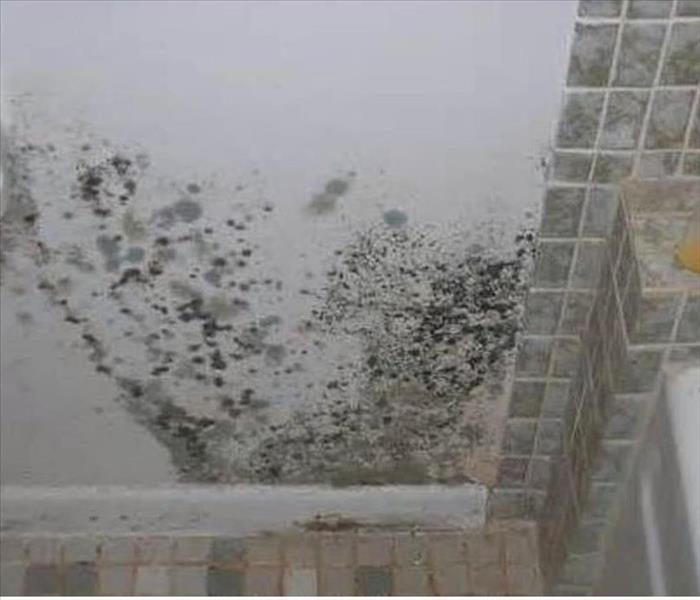 SERVPRO of The East End knows what to do if mold grows in your home or business.
SERVPRO of The East End knows what to do if mold grows in your home or business.
It’s estimated that more than 1 million types of mold exist, yet less than 10 percent have actually been named. This means mold is very common in both indoor and outdoor environments. While mold and humans can sometimes co-exist without issue, there are certain species of mold that can cause health effects for some people.
If the right conditions exist, mold will grow. Those conditions include:
- Water - Different mold types require varying amounts of liquid before growth begins.
- Temperature - Normal indoor temperatures will promote mold growth.
- Time - Initial mold colonizers can take hold within one day after being exposed to an adequate water supply.
Mold growth can occur in any home or business, so it’s important to keep an eye out for situations that might promote mold activity. Roof/chimney leaks, wet basements, or condensation from ducts that dampen surrounding insulation are just a few examples of issues that make a house a prime target for mold growth.
If you suspect mold in your home, call SERVPRO of The East End to assess the situation. We have the knowledge, tools and track record to effectively remediate mold in your home or business.
If you suspect mold, call us today at 631-653-9595
What to Do:
- Stay out of affected areas.
- Turn off the HVAC system and fans.
- Contact SERVPRO of The East End for mold remediation services.
What To Do When You Find Mold And Mildew
12/8/2016 (Permalink)
Both mold and mildew can signal that there are serious problems in the home regarding excess moisture, and if they aren’t eliminated right away, the contamination may spread. Fungal contamination is a common problem in humid areas, but it can emerge in any building where there are moisture infiltration issues or plumbing concerns. If the problem is caught very early, it may be possible to remove the contamination before it spreads, but in most cases, a home or business owner will need to bring in professionals to properly deal with the contamination.
What should a home or business owner do when they spot mold and mildew?
Professionals should always be contacted if the mold or mildew contamination covers at least 10 square feet of material. At this point, it is usually impossible to contain the fungi without professional intervention. However, even if the contamination only covers a small area, it is still wise to contact a professional if it’s a difficult to reach area, if the fungi has been introduced by plumbing or moisture infiltration problems, or if the home or business owner isn’t confident in dealing with the problem. The longer it takes to remove the contamination, the further it will spread and the more expensive the problem will become.
There are, though, some things that a homeowner can do to minimize the damage the contamination causes. Here are a few ways to mitigate the threat of mold and mildew:
- Consider removing any porous materials that have been contaminated or are near the contaminated area. Porous materials accelerate the spread of fungi and they may not be salvageable once affected. By removing them, a homeowner can slow the progression of the fungi and protect more of the home. It’s important, though, to wear safety gear when doing this and to do it slowly, as agitating the fungi can cause it to disperse in the air.
- Keep the contaminated area as dry as possible, and if there is a significant plumbing leak, consider cutting off water flow into the home. Moisture causes fungi growth to explode, so drying everything out can help isolate the contamination.
- Do not paint over the contaminated material. It may be tempting to paint or apply finish to the affected area, but this is only a temporary fix, and not an effective one at that. The fungi will prevent the paint or finish from properly adhering, and professionals will need to remove it to properly deal with contamination anyway.
Professionals address fungal contamination by discovering the root cause of the problem, addressing it if possible, and treating the affected area using commercial grade products and processes. Certified firms know how to seal off the area from the rest of the building to ensure the contamination does not spread. They will also salvage as much as possible, and safely dispose of anything that cannot be restored. This is the kind of comprehensive approach that will protect the home and family from further harm
Article written by: IICRC






 24/7 Emergency Service
24/7 Emergency Service








